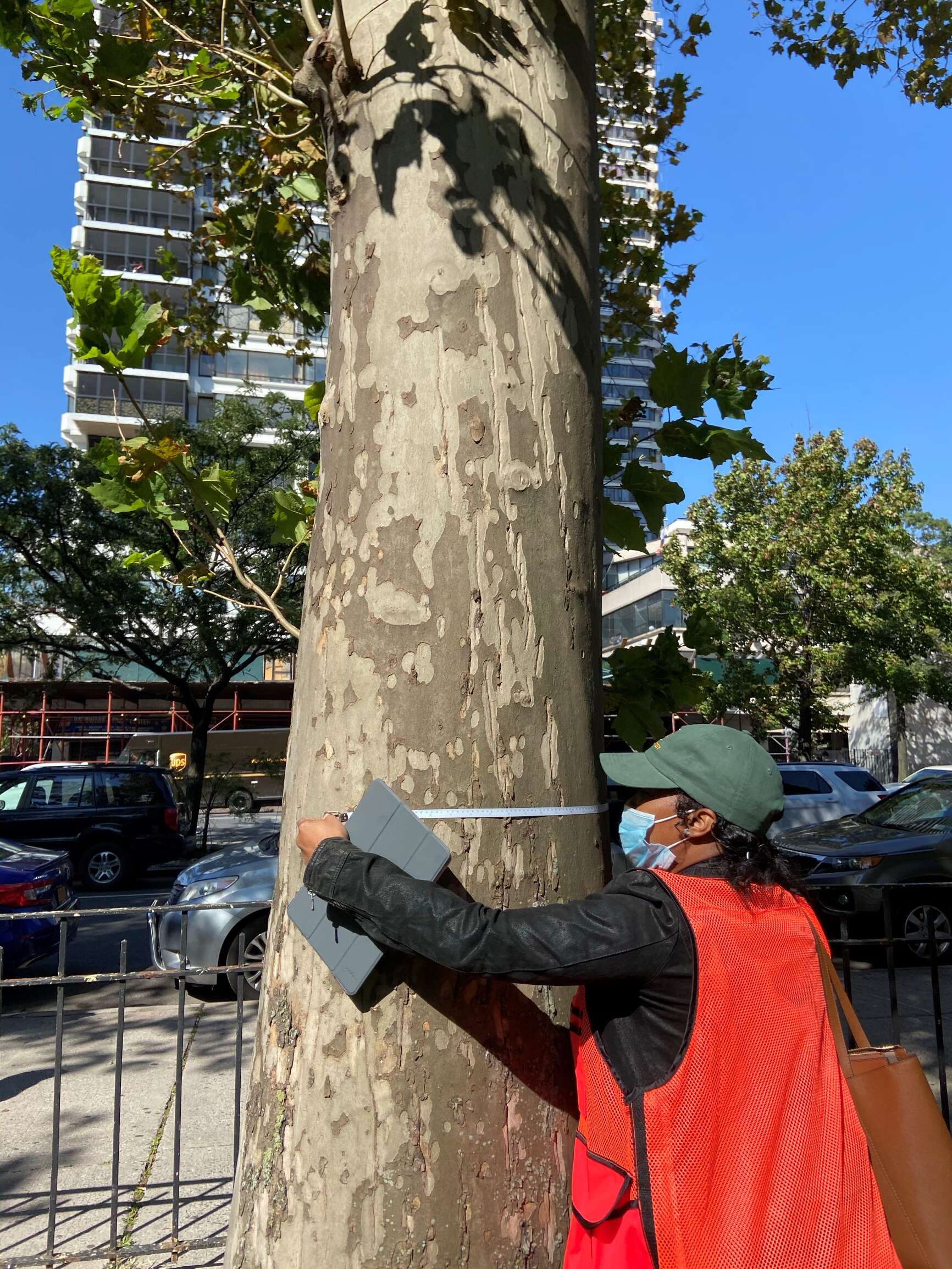Sadiqua Minor : My Experience on the Tree Assessment Project
What interested me most about the tree assessment project was the chance to try something different and new. I have never analyzed trees before. Trees are something that we all see every day. Growing up in New York City I have come across a variety of trees in many different conditions. The idea of learning more about trees aside from the fact that they produce clean air attracted me most. After participating in this tree project I can now speak on trees with confidence.
Urban Forests are collections of trees near a city, town, or a suburb, in this case, New York City. Urban Forests matter for several different reasons. The trees absorb carbon dioxide from the atmosphere and produce oxygen, and in the process makes the air clean and safe for us to breathe every day. Trees play a huge part in improving our respiratory health. Trees protect the environment from floods, fires, and wind, amongst others. They provide shade. Shade is important for hot sunny days, gardens, animals, and insects. These same trees produce food such as fruits, nuts, and spices, shelter for animals, and helps improve water quality. These are just some of the many benefits of Urban Forests. There is so much more to know about trees.
During my experience, I have also learned the importance of the health of trees. When trees are not cared for correctly it may slow down the growth of a tree. Some trees may be deformed, they may produce fewer fruits or none at all, and some may even die. Trees can also be stressed. Tree stress can stem from things such as trees being planted improperly, watered too much or not enough, damage from storms, humans, and insects, among many other causes. Any time any kind of damage is done to a tree it can cause the tree to become stressed. During my work, I have seen several signs of tree stress such as epicormic sprouts, exudation, cankers, larvae, and bark fissures. I also learned that dead twigs, browning leaves, holes in leaves, and premature leaf loss can be signs of damage to a tree.

Conducting this work in NYCHA developments made my position very interesting. What stood out the most was my resident encounters. I loved being able to pass on my knowledge of NYC’s urban farms to residents and watching their faces light up as much as mine did. Although all residents weren’t the happiest about trees, I was able to understand the many different standpoints of residents when it comes to the health and presence of the trees. I enjoyed being able to identify the species of a tree. I enjoyed challenging myself and learning new ways to identify a tree instead of only looking at the leaves. I can also help myself identify by the fruit, bark, and even by the way the branches sprout. I enjoyed it so much that I now cannot go by a tree without identifying it. The tree I saw most while on the job was London Plane trees. I thought that they were so popular in NYCHA developments because of them being such big and beautiful maple trees. However, I found out that the reason for there being so many in NYC’s urban forests is because of the strength of that particular tree. London Planes are very strong and they hold up best in storms. I also learned that when NYCHAs trees and open spaces are properly taken care of they are utilized by the residents more efficiently. There is a beautiful green space in Wagner houses that has plants and benches surrounded by London Plane trees. I would eat my lunch there on some days and it was very relaxing. There were always people out there reading, writing, or just taking in the atmosphere. NYCHA’s trees and open spaces provide space for residents to socialize, exercise, and/or simply relax and get peace of mind. This is really important for your mental health.
I cannot think of one experience that stands out more than others during my time on this project. My overall experience has been nothing less than exciting and educating. From identifying a tree to checking for pests to speaking with residents to just simply doing an observational survey of the area has been an experience that I will continue to speak on to my peers and my child. Even if I do not decide to make forestry a part of my future career plan, I am still extremely honored to have done this work and have the skills I now have under my belt. Trees play a huge role in our everyday lives. In fact, without trees, we will not be able to live. It is important for our community to care for our trees as we care for our lives.
